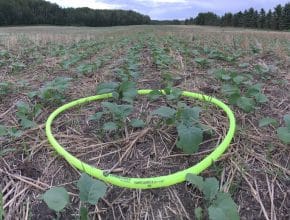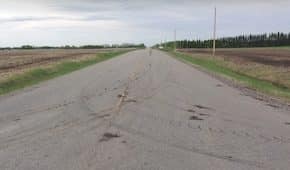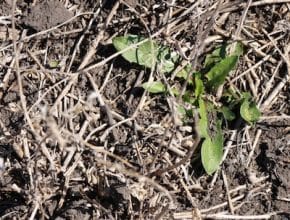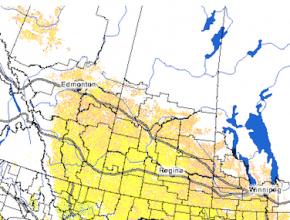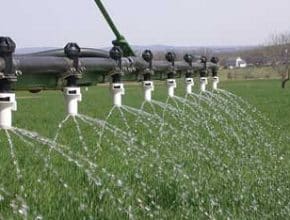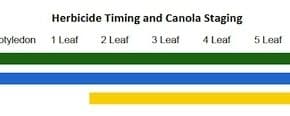Home / Canola Watch / Page 217
-
Start counting a week after seeding and repeat a couple of times over the following two weeks. Here's how…
-
A moist late spring means more mud clinging to equipment and, because growers are under extra pressure to get the crop seeded, less time available to clean equipment between fields. This greatly increases the risk of clubroot spreading from field to field. The following photos show high risk scenarios for clubroot spread…
-
Avoid top dress mess. Top dressing N might get the crop seeded faster, but check timing and technique. Good weed management and top dress fertilizer don’t always mix. Quack attack. Quack grass and dandelions are two early weeds that can have a big impact on yield potential. Contain them. Crop insurance cut off. Canola seeded in early June still has…
-
This map shows the difference in Normalized Difference Vegetation Index (NDVI) at 1-kilometer resolution as of May 19 to 25, 2014 compared to the same period in 2013. Yellow areas are similar to last year, light brown areas are slightly behind…
-
The questions for this week: 1. Flea beetles have been feeding on these cotyledons. What percentage of these leaves are considered defoliated? 2. Cutworm damage tends to be in patches. But lots of damage can occur in patches, including herbicide carryover, seedling diseases, so scouting is essential. What is the best way to scout for cutworms? 3. Why is this…
-
Top dressing fertilizer usually occurs after emergence, often as a response to increased yield potential or as a remedy for noticeable deficiency symptoms. However, growers are looking at top dressing this year as a logistical aid in getting the crop seeded faster. Here are some agronomy messages to help in your decision making…
-
In an Alberta study, fertigation was put on at three different stages — 5-leaf, bolting, and flowering — and then compared to plots where all nitrogen was applied at the time of seeding. The study has only one year of results, and so far they show that with canola, fertigation is — at best — equal to the treatment that…
-
If a burnoff didn't get done or missed key yield robbing early season weeds such as quackgrass and dandelion, then control has to be early in crop to prevent significant yield loss. For quackgrass in particular, in crop control may require a tank mix with good activity on grasses…
-
Manitoba and eastern Saskatchewan, in general, have a lower percentage of canola seeded than other parts of the prairie. Canola seeded June 5 or even June 10 in those regions can still produce a good crop, and crop insurance deadlines reflect that. Here are the deadlines…

